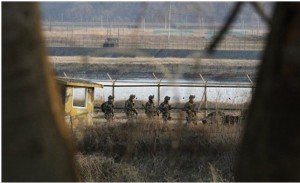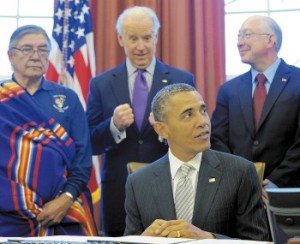Italy’s highest criminal court ordered a whole new trial for Amanda Knox and her former Italian boyfriend on Tuesday, overturning their acquittals in the gruesome slaying of her British roommate.
By FRANCES D’EMILIO
Originally published Tuesday, March 26, 2013 at 3:46 AM
Associated Press
ROME —
Italy’s highest criminal court ordered a whole new trial for Amanda Knox and her former Italian boyfriend on Tuesday, overturning their acquittals in the gruesome slaying of her British roommate.
The move extended a prolonged legal battle that has become a cause celebre in the United States and raised a host of questions about how the next phase of Italian justice would play out.
Knox, now a 25-year-old University of Washington student in her hometown of Seattle, called the decision by the Rome-based Court of Cassation “painful” but said she was confident that she would be exonerated.
The American left Italy a free woman after the 2011 acquittal and after serving nearly four years of a 26-year prison sentence from a lower court that convicted her of murdering Meredith Kercher. The 21-year-old British exchange student’s body was found in November 2007 in a pool of blood in the bedroom of a rented house that the two shared in the Italian university town of Perugia. Her throat had been slit.
Raffaele Sollecito, Knox’s Italian boyfriend at the time, was also convicted and acquitted.
It could be months before a date is set for a fresh appeals court trial in Florence, which was chosen because Perugia has only one appellate court. Italian law cannot compel Knox to return for the new trial and one of her lawyers, Carlo Dalla Vedova, said she had no plans to do so.
`’She thought that the nightmare was over,” Dalla Vedova told reporters on the steps of the courthouse. “(But) she’s ready to fight.”
He spoke minutes after relaying the top court’s decision to Knox by phone from the courthouse shortly after 2 a.m. local time in Seattle.
Another Knox defender, Luciano Ghirga, was gearing up psychologically for his client’s third trial. Ghirga said he told Knox: “You always been our strength. We rose up again after the first-level convictions. We’ll have the same resoluteness, the same energy” in the new trial.
Still, it was a tough blow for Knox, and she issued a statement through a family spokesman.
“It was painful to receive the news that the Italian Supreme Court decided to send my case back for revision when the prosecution’s theory of my involvement in Meredith’s murder has been repeatedly revealed to be completely unfounded and unfair,” she said.
Knox said the matter must now be examined by “an objective investigation and a capable prosecution.”
“No matter what happens, my family and I will face this continuing legal battle as we always have, confident in the truth and with our heads held high in the face of wrongful accusations and unreasonable adversity,” Knox said.
The young woman had planned to sit down with a U.S. TV network to tell her story in a prime-time special to be broadcast April 30. The exclusive ABC News interview was timed to the publication of her new book `’Waiting to Be Heard.”
It wasn’t immediately clear if there were any plans to delay the book, given the court setback.
Dalla Vedova said Knox wouldn’t come to Italy “for the moment” but would follow the case from home. He said he didn’t think the new appeals trial would begin before early 2014.
Prosecutors alleged Kercher was the victim of a drug-fueled sex game gone awry. Knox and Sollecito denied wrongdoing and said they weren’t even in the apartment that night, although they acknowledged they had smoked marijuana and their memories were clouded.
An Ivory Coast man, Rudy Guede, was convicted of the slaying in a separate proceeding and is serving a 16-year sentence. Knox and Sollecito were also initially convicted of the murder and given long prison sentences, but were then acquitted on appeal and released in 2011.
Whether Knox ever returns to Italy to serve more prison time depends on a string of ifs and unknowns.
Should she be convicted by the Florence court, she could appeal that verdict to the Cassation Court, since Italy’s judicial system allows for two levels of appeals – by prosecutors and the defense alike. Should that appeal fail, Italy could seek her extradition from the United States.
Whether Italy actually requests extradition will be a political decision made by a new government being formed right now after last month’s inconclusive national election.
In the past, Italian governments on both the left and the right refused Italian prosecutors’ request to seek extradition for the trial of 26 Americans accused in the kidnapping of an Egyptian cleric in Milan as under the CIA’s extraordinary rendition program. All 26 were tried in absentia, convicted of having roles in the abduction and received sentences ranging from seven to nine years. It will be up to the new government to decide if they will seek extradition to serve the sentences, all but three of which have been confirmed by the supreme court to date.
Ultimately, it will be up to U.S. authorities to decide to send Knox to Italy to serve any sentence if she was convicted. Dalla Vedova noted that U.S. authorities would likely carefully study all the documentation in the case to decide whether the U.S. citizen had received fair trials.
U.S. and Italian authorities could also come to a deal that would keep Knox in the United States.
The United States in the past extradited to Italy an Italian woman convicted in a domestic U.S. terrorism case after a deal was reached that she would serve out the rest of her sentence in her homeland. Instead, Italian authorities released her from prison not long after she arrived back in Italy, citing medical reasons.
Sollecito, who turned 29 on Tuesday, sounded shaken when a reporter from Sky TG24 TV reached him by phone to ask about the legal setback.
“Now, I can’t say anything,” said the Italian, who has been studying computer science in the northern city of Verona after finishing up an earlier degree while in prison.
One of his lawyers, Luca Maori, said neither Sollecito or Knox ran any danger of being arrested. `
‘It’s not as if the lower-court convictions are revived,” he said, noting that the Cassation Court didn’t pronounce “whether the two were innocent or guilty. ”
The appeals court that acquitted Knox and Sollecito had criticized virtually the entire case mounted by prosecutors, and especially the forensic evidence which helped clinch their 2009 convictions. The appellate court noted that the murder weapon was never found, said that DNA tests were faulty and that prosecutors provided no murder motive.
In arguing for the acquittals to be overturned, the prosecutor described the Perugia appellate court as being too dismissive about whether DNA tests on a knife prosecutors allege could have been the one used to slash Kercher’s throat and DNA traces on a bra belonging to the victim could be reliable findings, as well as tests done on blood stains in the bedroom and bathroom.
Whether that argument swayed the top court at this point was unclear, said Dalla Vedova.
Sollecito’s attorney, Giulia Bongiorno acknowledged that perhaps the appeals court ruling had been “too generous” in ruling that the pair simply did not commit the crime, but was confident that Sollecito’s innocence would be affirmed.
The court on Tuesday also upheld a slander conviction against Knox. During a 14-hour police interrogation, Knox had accused a local Perugia pub owner of carrying out the killing. The man was held for two weeks based on her allegations, but was then released for lack of evidence.
Her defense lawyers have contended that Knox felt pressured by police to name a suspect so her own interrogation could end.
Because of time she served in prison before the appeals-level acquittals, Knox didn’t have to serve the three-year sentence for the slander conviction. The court on Tuesday also ordered Knox to pay 4,000 euros ($5,500) to the man, as well as the cost of the lost appeal.
It was not known why the court concluded the appellate court had erred in acquitting Knox and Sollecito and won’t be until the Cassation judges issue their written ruling.
But Prosecutor General Luigi Riello, who successfully argued before the Cassation panel of judges for the acquittals to be overturned, said he thought it could be significant that the slander conviction was upheld. He noted that the appellate court – in explaining the acquittals – apparently didn’t attribute to Knox’s falsely accusing the pub owner a possible motive of covering up any of her own involvement.
The new trial in Florence will be `’guided by the principles” laid down in the written Cassation’s explanation, Riello said. Should the Cassation judges think `’there is a link” between Knox’s reason for fingering the pub owner and the murder, it could bolster prosecutors, he said.
The Kercher’s attorney, Francesco Maresca, said after Tuesday’s ruling: “Yes, this is what we wanted.”
In her statement, Knox took the Perugia prosecutors to task, saying they “must be made to answer” for the discrepancies in the case. She said “my heart goes out to” Kercher’s family.
—
AP writer Colleen Barry in Milan contributed to this report.




















